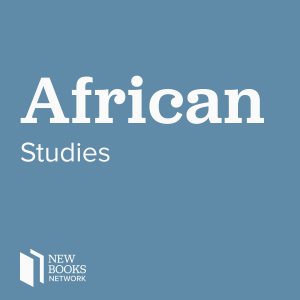
Jeff Koelher, “Where the Wild Coffee Grows: The Untold Story of Coffee from the Cloud Forests of Ethiopia to Your Cup” (Bloomsbury, 2017)
 2018-07-02
2018-07-02
Is life without coffee possible? Before you answer, first admit that you know almost nothing about the plant that you depend on to deliver you conscious into your day.
You will learn from Jeff Koehler’s wide-ranging history Where the Wild Coffee Grows: The Untold Story of Coffee from the Cloud Forests of Ethiopia to Your Cup (Bloomsbury, 2017) that the true origin of coffee is the cloud forest in the Kafa highlands of southwest Ethiopia, where it is a wild-growing, shade-loving tree. How Caffea arabica migrated first to the Arabian Peninsula (which accounts for its being incorrectly named arabica instead of ethiopica), then traveled further to Brazil, Indonesia, Kenya, and beyond, is a fascinating tale. This local plant becomes a global necessity; a tropical variety evolves into the cash crop of Central America, a monoculture of short plants crowded into straight rows. But on its home ground, coffee doesn’t play by these rules. Ethiopians consume 50 percent of their production domestically. “Coffee is our bread.” As it was embraced in the West in the early 1600s, it was regularly condemned by religious leaders in every country. Coffee houses brought people of different classes together, creating conversation and the exchange of ideas. This was dangerous. Not in Ethiopia. The coffee-drinking habit defines Ethiopian culture. Everyone drinks it, all day in small clay cups, and always with others, never alone. It is the definition of community. “Coffee is our bread.” By contrast, the North American bond with the morning cup of joe (Chock Full o’Nuts, Maxwell House) is undergoing a evolution into a pricey “boutique drink” (started by Seattle’s Starbucks and Berkeley’s Peet’s). Four or five dollars for a cup of coffee? But coffee is first a plant, so agriculture is destiny. Due to its genetic vulnerability (Koehler reveals a historical lack of coordination in international research among the coffee-growing nations), it could too easily become the Irish potato of the twenty-first century. Coffee leaf rust, caused by a fungus, is one of its greatest threats. This fungus brought the discovery of the variety Robusta (Caffea canephora) by Dutch growers in Java in the late nineteenth century. Robusta is the wunderkind of instant coffee due to its stronger flavor and higher caffeine content compared to Arabica. Robusta’s tropical durability made it the crop of choice in Central America, but coffee leaf rust has followed it there. When a crop fails, the grower is ruined. Sometimes the only option is to migrate elsewhere. The other enemy is climate change. Increase the growing temperatures by two degrees and production is affected. This also hits water availability for crop irrigation. And then there is man. Will UNESCO’s designation of World Heritage Site protect the Kafa Forest from rampant deforestation? And why did the poet Arthur Rimbaud end his days as a coffee planter in Yemen?
Will you now ponder these uncertainties as you sip your doubleshot iced latte macchiato?
Learn more about your ad choices. Visit megaphone.fm/adchoices
Support our show by becoming a premium member! https://newbooksnetwork.supportingcast.fm/african-studies
More Episodes
Create your
podcast in
minutes
- Full-featured podcast site
- Unlimited storage and bandwidth
- Comprehensive podcast stats
- Distribute to Apple Podcasts, Spotify, and more
- Make money with your podcast
It is Free
- Privacy Policy
- Cookie Policy
- Terms of Use
- Consent Preferences
- Copyright © 2015-2024 Podbean.com





